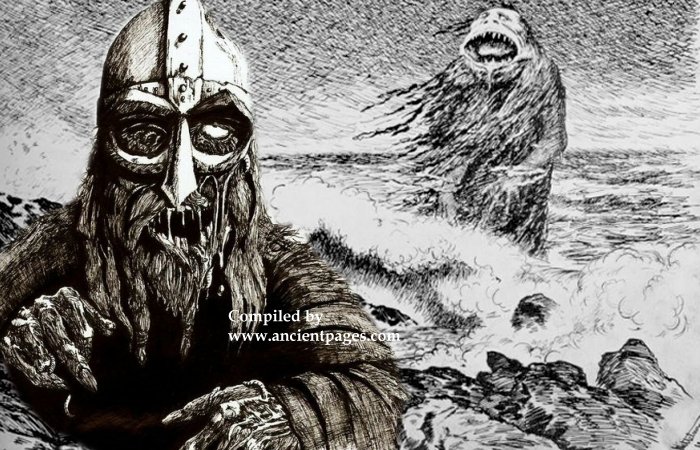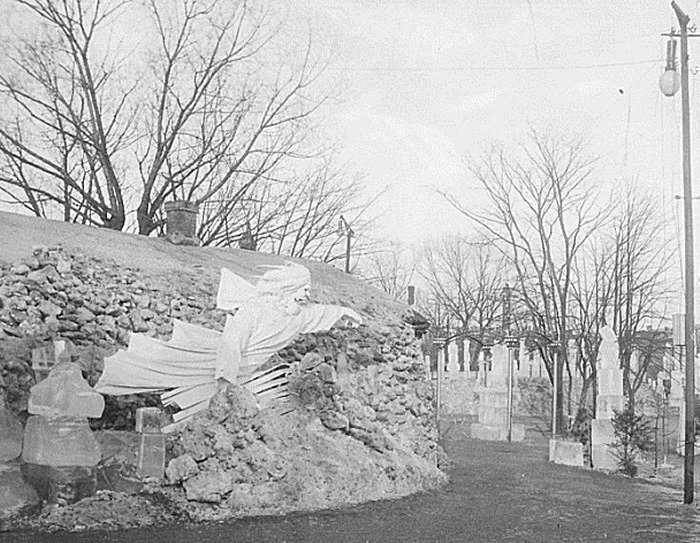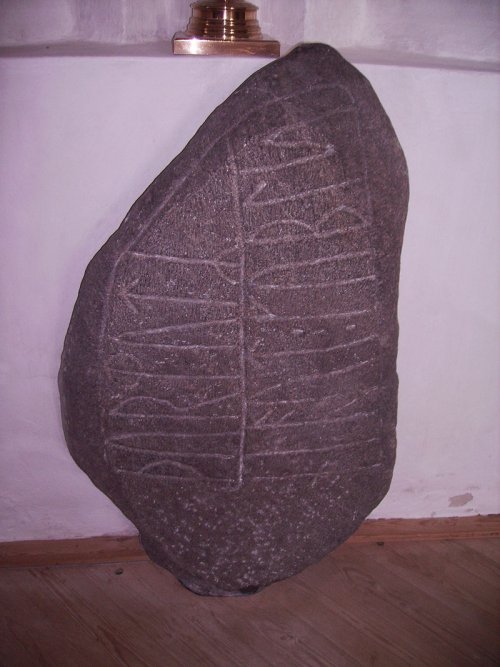Draugr – Vikings Feared This Ugly Living Dead With Prophetic Visions
Ellen Lloyd - AncientPages.com - In Norse mythology, there are many references to a creature known as Draugr, often described as a fearsome, ugly living dead who would rise from the grave and make life miserable for people.
Archaeological evidence shows Vikings feared the draugr so much that they took the necessary precautions to prevent the draugr from returning to the world of the living.
The draugr was by no means a stupid creature. The creature knew the secrets of the past and future. There were many reasons why Norse people feared the arrival of this horrible being.
What Was A Draugr?
The origin of the word 'Draugr' is not entirely clear. Some scholars think it comes from the same root as dream or Traum in modern German, but others trace it to the Indo-European' dhreugh' (harm, deceive). It's also possible there is a strong connection between the Old Norse' draugr' and the Old English 'draco.' We can identify the draugr as a human ghost we find in Norse people's beliefs.
In the Norse Sagas, the draugr (plural, draugar) is mentioned several times, and descriptions of this fearsome creature vary. Also, we shouldn't forget that there are different types of them. The Draugar lived in graves and guarded treasures buried with them.
These beings could rise from the grave and increase their size at will. The size attributed to this being was a way of expressing the vast strength of the creature. The draugr was not an ignorant creature. It could exhibit supernatural powers and possessed knowledge of the past and future. In Norse society, a female shaman known as Völva was attributed with the ability to foretell future events. However, in Norse sagas, stories describe how some draugar mastered prophetic visions.
An ice sculpture representing a draugr. Image credit: Christoffer Gade Rude (1839-1901) -Oslo Museum: image no. OB.F18000 (Byhistorisk samling), via oslobilder.no. - Public Domain
People feared the draugr because it displayed abnormal behavior, violent tendencies, and a hostile attitude toward humans. To the Norse people, a draugr was like a piece of wood.
In the sagas, there is not a single description of a bleeding draugr. One could find out whether a person had turned into it or was still human by checking if blood came from a wound.
This hideous being had lost human appearance and the capability to behave like humans and lacked social abilities. Yet, it could move, talk, and even recite poems. Some draugar were also associated with the gift of speech and prophetic visions. Sometimes, they could come in large groups to attack a settlement, but not everyone was interested in terrorizing humans. Many of these creatures enjoyed staying in their burial mound.
Who Could Become A Draugr?
Like many other ancient civilizations, the Vikings did not consider death to be the end of a person's existence. The concept of an afterlife played a significant role in Norse society. Sometimes, the afterlife seemed more real than the people living in it.
Norse scholars have identified two different sets of beliefs related to the fate of the dead. Some believed that life continued in Valhalla, the halls of the gods; others thought there was a continuation of life within the grave-mound. These two Norse afterlife beliefs are archaeologically supported.
The Nørre Nærå Runestone is interpreted as having a "grave binding inscription" used to keep the deceased in its grave. Credit: Søren Møller
A Viking warrior's ultimate dream was to enter Valhalla, God Odin's gigantic and majestic chamber of the fallen heroes – warriors and mighty chiefs – who died in heroic deaths in battle. But not everyone could enter Valhalla.
The person was not dead when a deceased body was placed in a grave. The 'dead' body was believed to become animated with strange life and power and could turn into a draugr. Anyone who had been buried could do it, too.
Archaeological Evidence Reveals Vikings Feared The Draugr
Archaeologists have discovered runestones that mention the Draugr. There is an inscription on the Karlevi Runestone on top of a burial mound: "Danger! Ghosts!"
The belief in the existence of draugr is ancient. Dated to the late 10th century, the Karlevi Runestone is the oldest runestone on the island of Öland, Sweden. Archaeologists discovered that the dead person's weapons had been made impossible to use in some Viking graves.
We have previously discussed complex ancient Viking funeral traditions and rituals.
By burning a body, one could be sure the deceased did not turn into a draugr.
Many relics in ancient tombs reveal that the type of burial a Viking received depended on his importance in society. When a Viking died, he could either be buried or burned. Powerful Viking chiefs who received ship burial could never come back as a draugr, and they were on their way to Valhalla, but Vikings buried in mounds risked turning into this horrible and feared creature.
Updated on February 16, 2024
Written by - Ellen Lloyd – AncientPages.com
Copyright © AncientPages.com All rights reserved. This material may not be published, broadcast, rewritten or redistributed in whole or part without the express written permission of AncientPages.com
More From Ancient Pages
-
 Rio Tinto Bosses Quit Over Destruction Of One Of The Earliest Aboriginal Sites
News | Sep 12, 2020
Rio Tinto Bosses Quit Over Destruction Of One Of The Earliest Aboriginal Sites
News | Sep 12, 2020 -
 Kaillachuro’s Hunter-Gatherers Built Monumental Burial Mounds In The Titicaca Basin 1,500 Years Earlier Than Previously Thought
Archaeology | Jul 21, 2025
Kaillachuro’s Hunter-Gatherers Built Monumental Burial Mounds In The Titicaca Basin 1,500 Years Earlier Than Previously Thought
Archaeology | Jul 21, 2025 -
 Was Ancient Egyptian Science Inherited From A Lost Atlantean Civilization?
Ancient Mysteries | Sep 4, 2017
Was Ancient Egyptian Science Inherited From A Lost Atlantean Civilization?
Ancient Mysteries | Sep 4, 2017 -
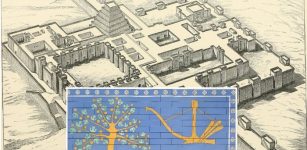 Mystery Of Ancient Symbols On A 2,700-Year-Old Temple In Khorsabad, Iraq – Solved
Archaeology | May 3, 2024
Mystery Of Ancient Symbols On A 2,700-Year-Old Temple In Khorsabad, Iraq – Solved
Archaeology | May 3, 2024 -
 Egyptian Gods’ Battle For Ancient Rome – Apis And Isis Cult Against Christianity
Ancient History Facts | Feb 9, 2018
Egyptian Gods’ Battle For Ancient Rome – Apis And Isis Cult Against Christianity
Ancient History Facts | Feb 9, 2018 -
 Ale Conner: Unpleasant And Dangerous Profession In Medieval England
Ancient History Facts | Oct 19, 2017
Ale Conner: Unpleasant And Dangerous Profession In Medieval England
Ancient History Facts | Oct 19, 2017 -
 Omphalos – Mysterious Ancient Sacred Object And Its Meaning
Artifacts | May 24, 2017
Omphalos – Mysterious Ancient Sacred Object And Its Meaning
Artifacts | May 24, 2017 -
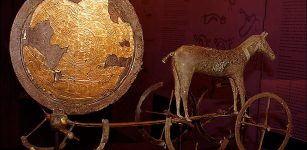 Sun Chariot – Powerful Symbol Of Bronze Age Cosmology
Ancient Symbols | Feb 28, 2018
Sun Chariot – Powerful Symbol Of Bronze Age Cosmology
Ancient Symbols | Feb 28, 2018 -
 Etzanoa: Long-Lost Native American City Discovered In Kansas After 400 Years
Archaeology | Apr 24, 2017
Etzanoa: Long-Lost Native American City Discovered In Kansas After 400 Years
Archaeology | Apr 24, 2017 -
 Three Judges Of Souls Await You On Chinvat Bridge – Gateway To Unknown Realms In Zoroastrian Beliefs
Featured Stories | Aug 11, 2021
Three Judges Of Souls Await You On Chinvat Bridge – Gateway To Unknown Realms In Zoroastrian Beliefs
Featured Stories | Aug 11, 2021 -
 Mythical Temple Of Wingded Warrior God Haldi In The ‘City Of The Raven’
Civilizations | Jul 21, 2016
Mythical Temple Of Wingded Warrior God Haldi In The ‘City Of The Raven’
Civilizations | Jul 21, 2016 -
 Human Footprints Dating Back 800,000 Years Discovered In Norfolk UK
Archaeology | Feb 7, 2014
Human Footprints Dating Back 800,000 Years Discovered In Norfolk UK
Archaeology | Feb 7, 2014 -
 Bill Of Rights 1689 – Enormous Historical Moment In English History
Ancient History Facts | May 6, 2019
Bill Of Rights 1689 – Enormous Historical Moment In English History
Ancient History Facts | May 6, 2019 -
 Did Lead Pollution Cause IQ Declines Among Ancient Romans?
Places | Jan 8, 2025
Did Lead Pollution Cause IQ Declines Among Ancient Romans?
Places | Jan 8, 2025 -
 Unexpected Discovery Of Viking Trading Place In Norway Re-Writes History
Archaeology | Jul 22, 2020
Unexpected Discovery Of Viking Trading Place In Norway Re-Writes History
Archaeology | Jul 22, 2020 -
 New Evidence Reveals That Humans Settled In Americas At Least 13,000 Years Ago
Archaeology | Sep 4, 2017
New Evidence Reveals That Humans Settled In Americas At Least 13,000 Years Ago
Archaeology | Sep 4, 2017 -
 The Green Knight – New Movie Based On Arthurian Legend
Myths & Legends | Aug 7, 2021
The Green Knight – New Movie Based On Arthurian Legend
Myths & Legends | Aug 7, 2021 -
 Sailor’s Strange Discovery Of An Unknown Ancient Underground World At The North Pole
Featured Stories | Feb 10, 2024
Sailor’s Strange Discovery Of An Unknown Ancient Underground World At The North Pole
Featured Stories | Feb 10, 2024 -
 Mystery Of The Controversial Phantom Time Hypothesis
Featured Stories | Mar 21, 2019
Mystery Of The Controversial Phantom Time Hypothesis
Featured Stories | Mar 21, 2019 -
 Engraved Trees Are Living Records Capturing The Rich History And Traditions Of The Sámi People
Archaeology | Nov 21, 2024
Engraved Trees Are Living Records Capturing The Rich History And Traditions Of The Sámi People
Archaeology | Nov 21, 2024

